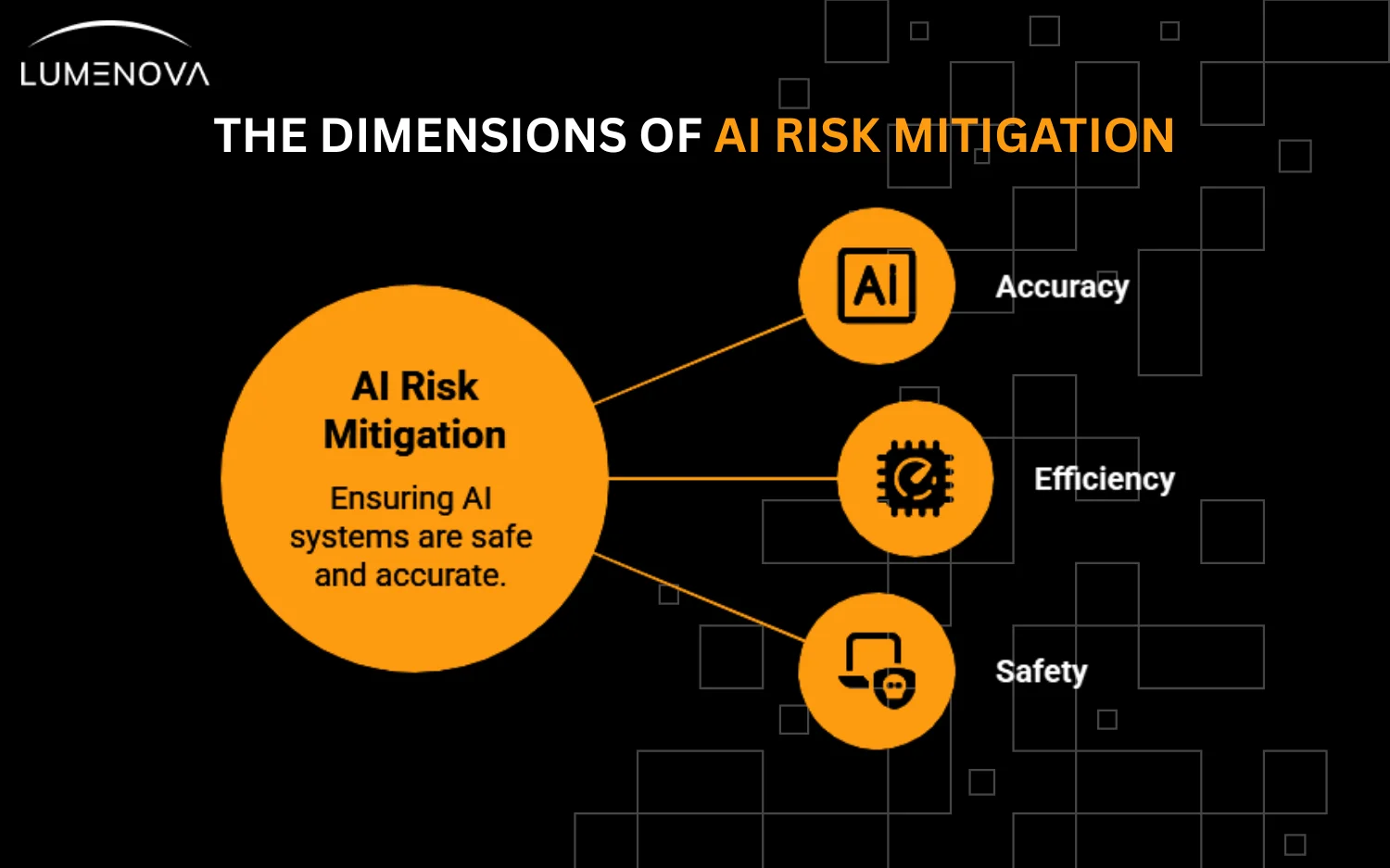AI Risk Mitigation
AI risk mitigation refers to the process of identifying, assessing, and reducing the potential threats that AI systems can introduce into an organization or society. These risks can include security vulnerabilities, algorithmic bias, compliance failures, privacy leaks, and harmful or unintended behaviors.
As organizations rely more heavily on AI to automate decisions, analyze data, and interact with users, the consequences of poor oversight grow. Whether it’s a chatbot sharing sensitive information, a predictive model misclassifying data, or an autonomous system behaving unpredictably, the risks are no longer theoretical, they’re operational.
AI risk mitigation is not about avoiding AI. It’s about using it responsibly, safely, and effectively. This means designing systems that are not only powerful but also transparent, fair, and secure.

Why AI Risk Mitigation Matters
AI is now embedded in high-impact environments. It’s used to approve loans, make hiring decisions, detect fraud, diagnose illnesses, and more. In these scenarios, accuracy, efficiency, and safety are critical. Without proper risk mitigation, AI systems can cause harm at scale.
Common AI Risks That Require Mitigation
- Security risks: Models can be attacked or manipulated through adversarial inputs or model theft, making systems vulnerable to exploitation.
- Bias and fairness: AI trained on unbalanced or flawed data may produce biased outcomes, which can lead to discrimination and regulatory violations.
- Privacy violations: AI systems that process sensitive data must be monitored to avoid leaking private or regulated information.
- Lack of explainability: When decisions are made by a system that is poorly understood, it’s hard to detect errors or hold anyone accountable.
- Compliance gaps: Many industries must comply with data protection laws like the GDPR, HIPAA, or sector-specific regulations. AI that can’t meet these standards introduces legal vulnerabilities.
By addressing these risks early and consistently, organizations can prevent costly failures, avoid reputational damage, and build systems that inspire trust (internally and externally).
Key Strategies for AI Risk Mitigation
Mitigating AI risks takes more than a one-time audit or a technical patch. It requires a systematic, continual approach across the AI lifecycle.
1. Risk Identification and Assessment
The first step in risk mitigation is knowing where the risks are. This includes evaluating training data quality, assessing the sensitivity of inputs and outputs, and identifying points of exposure across the system.
Teams should regularly perform risk assessments for both new and existing models. This includes checking for edge cases, adversarial vulnerabilities, and potential ethical concerns.
2. Model Governance and Oversight
Strong governance means having clear controls over how AI systems are built, used, and updated. This includes:
- Documentation of data sources and training processes
- Version control and traceability for models
- Defined ownership and accountability structures
- Risk thresholds and escalation paths for high-impact systems
A well-governed model is easier to audit, monitor, and improve (and much harder to exploit or misuse).
3. Technical Safeguards
Technical defenses are a key part of AI risk mitigation. These include:
- Adversarial testing to expose weaknesses before attackers can
- Explainability tools that help teams understand model behavior
- Data anonymization and encryption to protect sensitive data
- Output filters and prompt moderation for generative AI and chatbots
These tools don’t eliminate risk entirely, but they help contain and control it, making systems more robust and dependable.
4. Continuous Monitoring and Audit
AI systems are dynamic. The risks don’t stop once a model goes live. That’s why ongoing monitoring is essential. Organizations need tools that can detect unusual behavior, performance degradation, or external attacks in real time.
Audits should also be scheduled regularly (especially in regulated environments). Logs, usage patterns, and model outputs should be reviewed to ensure the system continues to perform safely and ethically.
AI Risk Mitigation as a Foundation for Responsible AI
AI risk mitigation is not a roadblock to innovation. You can’t scale AI responsibly without understanding and managing its risks. In fact, the companies that invest in proactive risk mitigation are often the ones who move faster, avoiding the delays and crises that come from failure.
Risk mitigation also aligns closely with Responsible AI (RAI) principles like fairness, transparency, accountability, and governance. It’s how organizations ensure their systems are not only effective but also ethical and compliant.
At Lumenova AI, we help organizations embed risk mitigation directly into their AI operations. Our platform enables full lifecycle governance, continuous model monitoring, and proactive risk management (all designed to make AI safer, smarter, and more accountable).
Whether you’re working on machine learning, generative AI, or decision automation, AI risk mitigation is no longer optional. It’s a critical part of building AI systems that people can trust, regulate, and scale.
By investing in the right tools, policies, and oversight, organizations can reduce exposure, ensure compliance, and protect both people and systems from unintended harm. AI is powerful. Risk mitigation makes it sustainable.